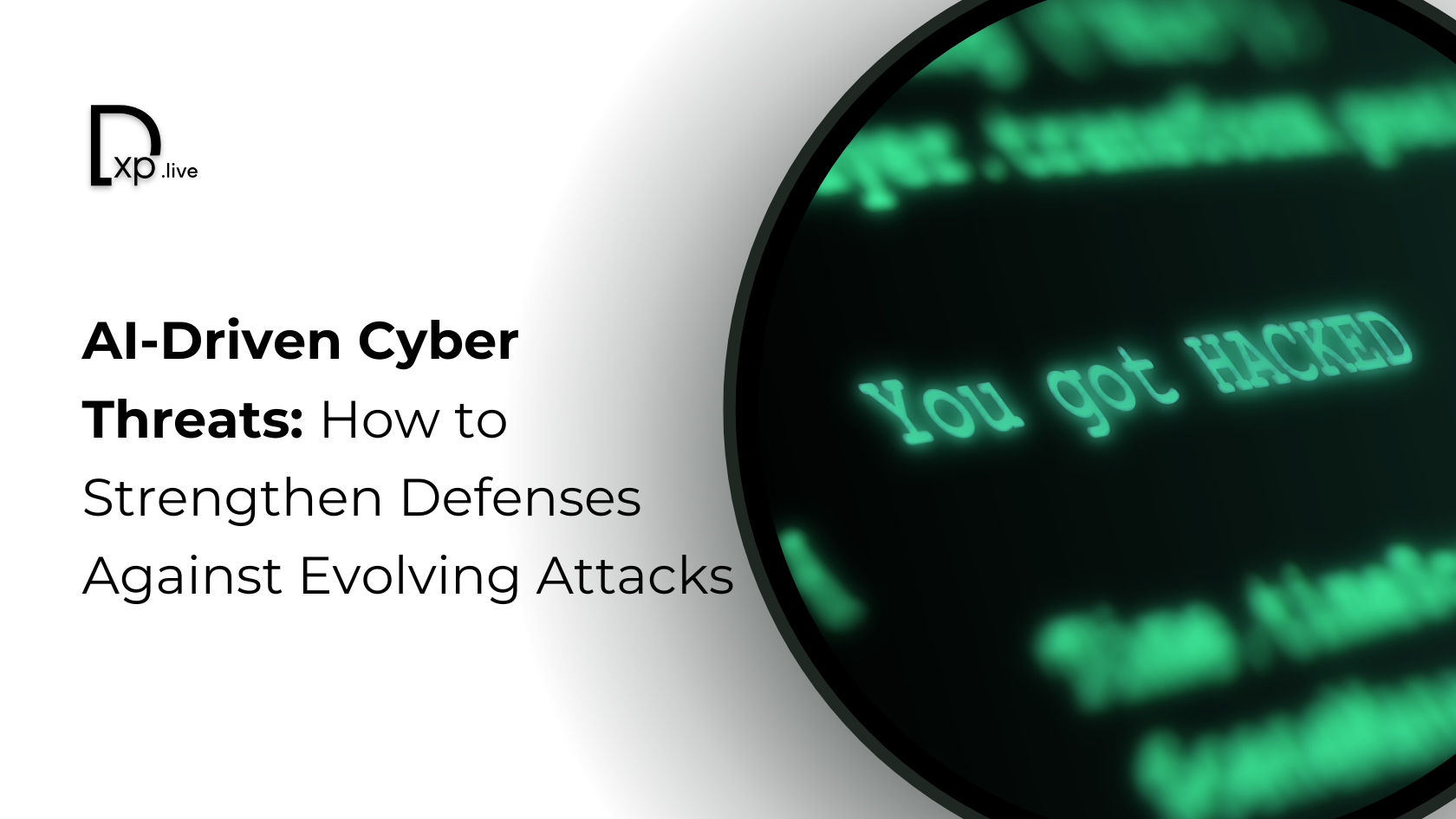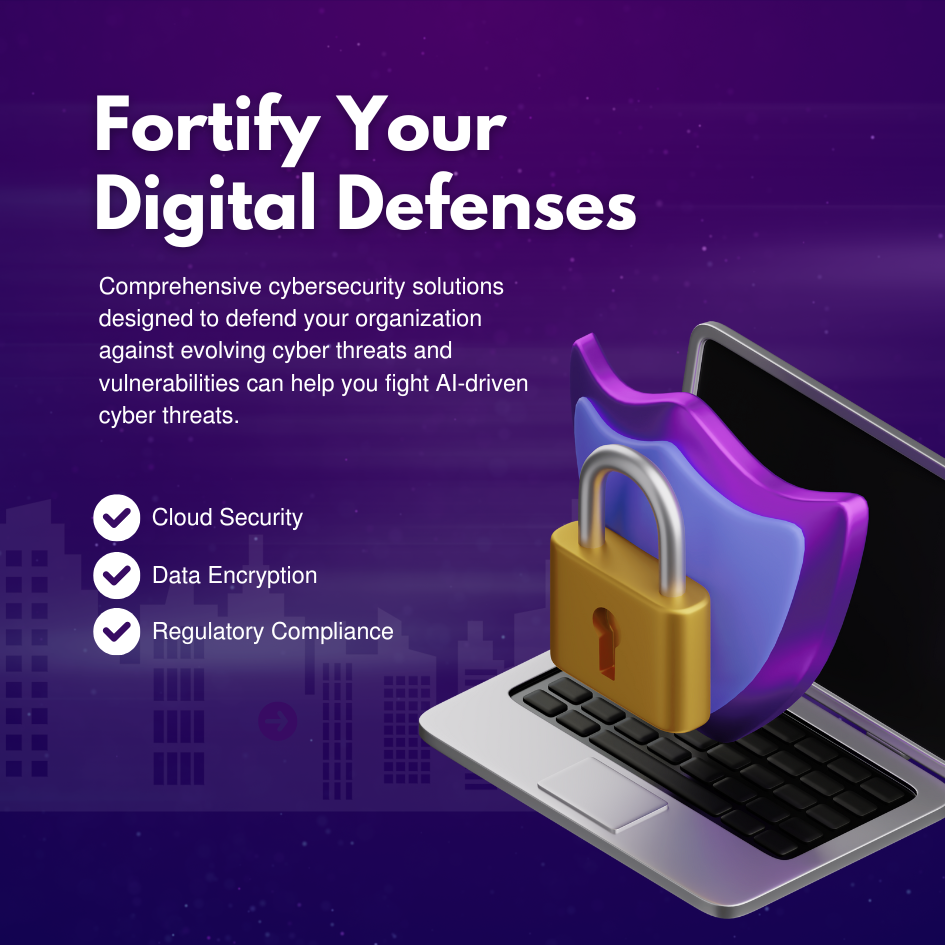AI-Driven Cyber Threats: How to Strengthen Defenses Against Evolving Attacks

The Evolving Cybersecurity Landscape
The cybersecurity industry has been rocked by the increasing sophistication of AI-driven cyber threats. In July 2024, a report by Gartner revealed a staggering increase in AI-enhanced attacks, with AI tools being used not just for conventional malware but to create deepfake impersonations, automated phishing campaigns, and adaptive ransomware that learns from defenses in real-time.
AI is increasingly both a powerful tool and a potential threat in cybersecurity. For example, while generative AI aids in automating content creation and improving data analysis, it also introduces new security vulnerabilities, such as "dark AI" used for malicious purposes like creating highly sophisticated phishing attacks or bypassing security systems. Companies are advised to invest in defensive measures, such as developing private AI instances and strengthening data protection protocols
As AI technology advances, so do the threats it enables, creating new challenges for companies already grappling with the complexities of cybersecurity. But how can companies adapt to this emerging landscape?
This article explores the current state of AI-driven cyber threats, the challenges businesses face in mitigating them, and the strategies that leading organizations are adopting to stay one step ahead. We’ll dive into the key problems AI-driven threats pose, why this shift in cybercrime is so significant, and the potential benefits of evolving from traditional defenses to more adaptive, AI-based solutions.
The Pain Point: Rise of AI-Driven Cyber Threats
Traditional cybersecurity defenses—while effective in the past—are struggling to keep pace with the rapid evolution of AI-driven cyber threats. These threats are not only more complex but also more adaptive, constantly learning from an organization’s defenses and weaknesses. AI enables hackers to launch more efficient and targeted attacks, undermining static security measures that rely on predefined rules and manual interventions.
One of the biggest concerns is that AI-driven cyber threats are scalable, allowing cybercriminals to automate attacks across hundreds or even thousands of targets simultaneously. This dramatically increases the scope of potential damage, from compromised customer data to large-scale disruptions of critical services. In addition, AI has enabled cybercriminals to craft highly realistic social engineering attacks, such as deepfake videos and audio, which can deceive even the most trained cybersecurity personnel.
“GenAI is occupying significant headspace of security leaders as another challenge to manage, but also offers an opportunity to harness its capabilities to augment security at an operational level,” says Richard Addiscott, Senior Director Analyst at Gartner. “Despite GenAI’s inescapable force, leaders also continue to contend with other external factors outside their control they shouldn’t ignore this year.”
The sheer volume, speed, and precision of these attacks create a substantial burden on businesses, forcing them to rethink their security strategies. Companies need solutions that can predict, adapt, and counter these threats in real-time, or risk falling prey to the next wave of AI-enabled cyberattacks.
Why This Problem is Critical: The Risks and Opportunities

AI-driven cyber threats are more than just an emerging trend—they represent an existential risk to businesses across all sectors. A study from Forrester reported that 56% of security professionals believe AI-based cyberattacks will outpace human-driven cybersecurity defenses by 2026. The cost of cybercrime, already expected to reach $10.5 trillion by 2025 (according to Cybersecurity Ventures), will be compounded by AI-enhanced attacks that can bypass traditional security protocols.
The consequences of not addressing these threats are catastrophic. A breach can result in not only direct financial losses but also reputational damage, regulatory fines, and a loss of customer trust. With AI capable of automating large-scale attacks, the potential damage grows exponentially.
Yet, alongside the risks, there are opportunities. If companies can harness the power of AI for defense, they can turn the tide against cybercriminals. AI can be used to build more adaptive, intelligent cybersecurity systems capable of predicting and neutralizing attacks in real-time, creating a proactive rather than reactive approach to cyber defense.
Solving the Problem: A Framework for Strengthening Defenses
a) Industry Practices and Steps
To counter AI-driven cyber threats, leading companies like Amazon Web Services (AWS) and IBM are adopting a multi-layered, AI-driven defense strategy. These strategies include the use of AI-enhanced threat detection systems, behavioral analytics, and automated response protocols. For example, AWS has integrated AI into its cloud security services, allowing organizations to identify abnormal patterns and isolate threats before they can escalate. Similarly, IBM's Watson for Cybersecurity uses AI to analyze millions of data points, identify potential threats, and recommend mitigation strategies.
b) Key Steps in Strengthening Defenses

- Behavioral Analytics: AI-powered tools like Splunk use machine learning to analyze user behavior and detect deviations from normal activity, signaling potential threats.
- Automated Threat Detection: Companies like CrowdStrike employ AI to continuously monitor networks, identifying and responding to threats without human intervention.
- AI-Enhanced Threat Intelligence: Solutions such as Cisco Talos leverage AI to aggregate threat data from multiple sources, identifying emerging attack vectors before they can cause harm.
c) Insights from Academia
Thought leaders in academia are also weighing in on the importance of leveraging AI for cybersecurity. Research from Harvard Business Review (HBR) highlights that while traditional defenses are becoming obsolete, the integration of AI-driven models can dramatically improve an organization’s ability to predict, identify, and mitigate cyber threats. These models, grounded in real-time learning, are not only more responsive but also able to process vast amounts of data far quicker than human-driven systems.
d) Industry Experts on AI-Based Security
Industry pioneers like Bill Gates have long emphasized the need for technology to stay ahead of malicious actors. Gates recently noted in a Wall Street Journal interview that "AI is a double-edged sword in cybersecurity. While it can be exploited by attackers, it also holds the key to smarter, more efficient defenses." Similarly, Nandan Nilekani, co-founder of Infosys, has argued that "AI-driven cybersecurity will become the foundation of digital trust in the 21st century," further cementing the idea that organizations must adopt AI-enhanced security measures.
e) ROI and Investment
Investing in AI-driven cybersecurity is not just about preventing losses but also delivering a significant return on investment. A Ponemon Institute study found that companies deploying AI-based cybersecurity tools reduced the average cost of a breach by 27%, a testament to the financial viability of these solutions.
Conclusion: Evolving Defenses for Evolving Threats
The rise of AI-driven cyber threats is undeniable. But as attackers grow more sophisticated, so too must the defenses employed by US companies. By embracing AI-driven solutions, businesses can create more adaptive, proactive defenses that neutralize threats before they materialize. As companies like Amazon, IBM, and CrowdStrike continue to lead the way in AI-enhanced security, the future of cybersecurity lies in the seamless integration of AI technologies.
Companies that fail to adopt these advanced measures risk falling behind, while those that embrace them will strengthen their resilience, protect their assets, and safeguard their reputations. In the ever-evolving landscape of cyber threats, adaptation is not just recommended—it is essential.
FAQs
1. What are AI-driven cyber threats?
AI-driven cyber threats involve the use of artificial intelligence to enhance the sophistication, speed, and scale of cyberattacks.
2. How do AI-driven cyber threats work?
They work by using AI to automate attacks, such as phishing or ransomware, learning from the defenses they encounter to bypass security systems.
3. What can companies do to protect themselves from AI-driven cyber threats?
Companies can adopt AI-enhanced defense systems, implement behavioral analytics, and invest in automated threat detection to strengthen their cybersecurity posture.
4. Why are AI-driven threats more dangerous than traditional cyberattacks?
AI-driven threats are more dangerous because they can scale attacks across multiple targets, adapt in real-time, and automate processes that would typically require human intervention.




